
Frontiers in Heat and Mass Transfer
Scope & Guideline
Bridging Gaps in Scientific Understanding
Introduction
Aims and Scopes
- Heat Transfer Mechanisms:
The journal focuses on various mechanisms of heat transfer including conduction, convection, and radiation, exploring their applications in different engineering systems. - Fluid Dynamics:
Research on the dynamics of fluids, particularly in relation to heat and mass transfer, is a core area of interest, including studies on laminar and turbulent flow behaviors. - Thermal Management Systems:
The journal emphasizes the design and optimization of thermal management systems for various applications, including electronics cooling, HVAC systems, and renewable energy technologies. - Nanofluids and Advanced Materials:
There is a consistent focus on the use of nanofluids and other advanced materials in enhancing heat transfer performance, reflecting the trend towards materials that improve thermal efficiency. - Renewable Energy Applications:
Research related to the integration of heat and mass transfer principles in renewable energy systems, such as solar thermal collectors and geothermal systems, is prominently featured. - Computational Fluid Dynamics (CFD):
The journal frequently publishes studies that utilize CFD techniques to model complex heat transfer and fluid flow phenomena, demonstrating the importance of simulation in this field.
Trending and Emerging
- Sustainable Refrigeration and Heat Pumps:
There is an increasing emphasis on environmentally friendly refrigerants and heat pump technologies aimed at reducing global warming potential, aligning with global sustainability goals. - Smart Energy Management Systems:
Research on intelligent systems that optimize energy consumption and thermal performance in various applications, including smart buildings and electric vehicles, is gaining traction. - Phase Change Materials (PCMs):
The integration of PCMs in thermal management systems is a growing area of interest, particularly for energy storage solutions in solar applications and buildings. - Micro and Nano-Scale Heat Transfer:
Investigations into heat transfer at micro and nano scales are on the rise, driven by advances in materials science and the need for efficient thermal management in miniaturized devices. - Heat Transfer Enhancement Techniques:
There is a notable trend towards exploring innovative heat transfer enhancement techniques, such as the use of fins, grooves, and other surface modifications to improve thermal performance.
Declining or Waning
- Traditional Heat Exchanger Designs:
There has been a noticeable decrease in publications focusing on conventional heat exchanger designs, as researchers increasingly explore innovative configurations and materials. - Basic Thermodynamics:
The foundational aspects of thermodynamics are appearing less frequently, possibly as the field shifts towards more complex systems and applications rather than basic theoretical studies. - Single-Phase Flow Investigations:
Research on single-phase flow dynamics is becoming less common, with a growing emphasis on multi-phase and complex fluid interactions, reflecting advancements in understanding fluid behavior. - Passive Cooling Techniques:
Studies centered on passive cooling methods are declining, as more attention is being directed towards active cooling solutions and hybrid systems that combine multiple cooling strategies. - Localized Heating Solutions:
The specific exploration of localized heating applications is waning, as broader system-level analyses take precedence in addressing thermal management challenges.
Similar Journals

Case Studies in Thermal Engineering
Exploring Breakthroughs in Fluid Flow and TransferCase Studies in Thermal Engineering, published by ELSEVIER, stands as a premier platform for innovative research and analysis in the field of thermal engineering since its inception in 2013. With a robust Open Access model, this journal ensures that groundbreaking findings in fluid flow and transfer processes are readily accessible to a global audience, fostering collaboration and knowledge sharing across disciplines. Situated in the United Kingdom, the journal boasts an impressive impact factor, reflecting its status in the first quartile (Q1) for both engineering (miscellaneous) and fluid flow and transfer processes, as noted in the latest Scopus rankings. Researchers and professionals alike recognize its significance, ranking 9th out of 96 in Chemical Engineering and achieving a notable 91st percentile in its category. By publishing high-quality case studies, the journal aims to advance understanding and applications of thermal engineering principles, making it an essential resource for those looking to stay at the forefront of this dynamic field.
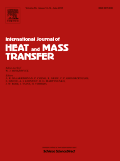
INTERNATIONAL JOURNAL OF HEAT AND MASS TRANSFER
Exploring Innovations in Fluid Flow and Transfer ProcessesINTERNATIONAL JOURNAL OF HEAT AND MASS TRANSFER is a premier, peer-reviewed academic journal published by PERGAMON-ELSEVIER SCIENCE LTD, focusing on the vital fields of condensed matter physics, fluid flow, and transfer processes, as well as mechanical engineering. With an impressive impact factor and consistently ranked in the Q1 quartile across multiple engineering and physics categories, this journal stands out for its rigorous scholarship and relevance to advancements in heat and mass transfer phenomena. Spanning from 1960 to 2024, it serves as a critical platform for researchers and professionals aiming to disseminate innovative findings and foster cutting-edge discussions in these interconnected domains. Though it operates on a subscription model, readers benefit from a comprehensive archive that covers seminal studies and contemporary advancements. Academics and practitioners alike can deepen their understanding of the complex interplay between heat and mass transfer, which is essential for numerous applications in engineering and scientific research.
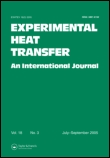
EXPERIMENTAL HEAT TRANSFER
Advancing Thermal InnovationEXPERIMENTAL HEAT TRANSFER, published by Taylor & Francis Inc, is a leading journal in the fields of heat transfer, control and systems engineering, and instrumentation, with a strong impact factor evidenced by its placement in the second quartile (Q2) for relevant categories as of 2023. With ISSN 0891-6152 and E-ISSN 1521-0480, the journal has been an essential platform for researchers since its inception in 1987, facilitating the dissemination of innovative research, experimental methods, and advancements in thermal engineering. This journal, based in the United Kingdom, focuses on both applied and theoretical aspects of heat transfer, engaging a diverse audience of professionals and students keen on the latest scientific breakthroughs in the domain. With its solid Scopus rankings, including being in the top 76th percentile in Physics and Astronomy: Instrumentation, EXPERIMENTAL HEAT TRANSFER continues to be a vital resource for advancing knowledge and fostering collaboration among the academic community.

INTERNATIONAL JOURNAL OF HEAT AND FLUID FLOW
Connecting Scholars in the Realm of Heat and Fluid FlowFounded in 1979, the INTERNATIONAL JOURNAL OF HEAT AND FLUID FLOW is a premier publication in the fields of mechanical engineering, fluid dynamics, and heat transfer, published by Elsevier Science Inc. With an impressive impact factor and ranking in the Q1 category for Mechanical Engineering and Q2 for Condensed Matter Physics and Fluid Flow and Transfer Processes, this journal is highly regarded for its rigorous peer-reviewed articles that contribute significantly to the advancement of knowledge in these critical areas. Researchers, professionals, and students can access cutting-edge studies that explore the intricacies of thermal and fluid systems, ensuring they stay at the forefront of scientific exploration. The Scopus rankings further affirm its role as a leading source of impactful research, with significant placements in crucial academic categories. Join an active community of scholars committed to innovation and excellence in the exploration of heat and fluid flow phenomena.
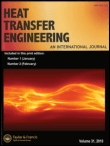
HEAT TRANSFER ENGINEERING
Advancing thermal innovation for a sustainable future.HEAT TRANSFER ENGINEERING is a leading international journal published by Taylor & Francis Inc, dedicated to advancing the field of heat transfer and thermal engineering. With a strong focus on the key aspects of Condensed Matter Physics, Fluid Flow and Transfer Processes, and Mechanical Engineering, this journal covers a comprehensive range of topics from experimental studies to theoretical analysis, aiming to foster innovative research and practical applications. Since its inception in 1979 and continuing through 2024, the journal has established itself as an essential resource for researchers and industry professionals alike, reflected in its solid rankings within Scopus—holding a Q2 quartile classification in multiple engineering disciplines. Although not open access, the journal ensures broad accessibility through institutional subscriptions, making cutting-edge research readily available. With its rigorous peer-review process and commitment to quality, HEAT TRANSFER ENGINEERING plays a crucial role in shaping the future of thermal management solutions and engineering practices.
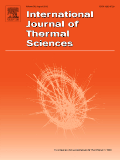
INTERNATIONAL JOURNAL OF THERMAL SCIENCES
Connecting scholars through cutting-edge thermal studies.The INTERNATIONAL JOURNAL OF THERMAL SCIENCES is a premier academic journal published by ELSEVIER FRANCE-EDITIONS SCIENTIFIQUES MEDICALES ELSEVIER, focusing on cutting-edge research in the field of thermal sciences. With its ISSN 1290-0729 and E-ISSN 1778-4166, this journal has established itself as a crucial resource for scholars and professionals interested in the thermodynamic principles governing engineering and condensed matter physics. The journal is ranked Q1 in both Condensed Matter Physics and Engineering (miscellaneous), highlighting its exceptional quality and influence, as reflected in its impressive Scopus ranks: #32 out of 307 in General Engineering (89th percentile) and #57 out of 434 in Condensed Matter Physics (86th percentile). Researchers and students alike can benefit from the wealth of articles available, with access options designed to foster a wider dissemination of knowledge within the scientific community. Established in 1973 and ongoing through 2025, the journal invites contributions that advance the understanding of thermal phenomena and their applications, solidifying its importance in driving innovation and insight within these dynamic fields.

Journal of Thermal Science
Exploring the depths of thermal science for a sustainable future.Journal of Thermal Science is a prestigious academic publication dedicated to the field of thermal science and its applications. Published by SPRINGER, this journal has been at the forefront of knowledge dissemination since its inception in 1992 and continues to provide a platform for researchers and professionals to share their innovative findings through high-quality peer-reviewed articles. With its ISSN 1003-2169 and E-ISSN 1993-033X, the journal covers a diverse array of topics related to thermal processes, materials, and engineering, significantly contributing to advancements in Condensed Matter Physics. In the latest rankings, it holds a commendable Q2 category in the 2023 quartiles, further highlighting its relevance with a Scopus ranking of #183/434 in its field, placing it in the top 57th percentile. While currently not offering open access, the journal strives to bridge the gap between theory and practice, making substantial impacts on both academia and industry. Its continued exploration of cutting-edge research ensures that it remains a key resource for students and professionals looking to expand their knowledge and foster innovation in thermal sciences.

Computational Thermal Sciences
Pioneering Research in Energy Engineering and Fluid DynamicsComputational Thermal Sciences, an esteemed journal published by BEGELL HOUSE INC, presents cutting-edge research at the intersection of computational mathematics, energy engineering, and fluid dynamics. With an ISSN of 1940-2503 and an E-ISSN of 1940-2554, this journal aims to disseminate high-quality research articles, reviews, and methodologies that improve our understanding of thermal processes and their applications. Renowned for its solid impact in the field, it holds a Q3 ranking in multiple categories including Computational Mathematics and Energy Engineering for 2023. As the field evolves, the journal continues to play a pivotal role in bridging theoretical research with practical innovations, thereby catering to a diverse audience of researchers, professionals, and students. Although it operates on a subscription model, the journal ensures accessibility to significant contributions in thermal sciences from 2009 to 2024, fostering an environment of knowledge sharing and collaboration.
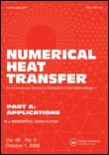
NUMERICAL HEAT TRANSFER PART A-APPLICATIONS
Elevating the discourse in numerical heat transfer and condensed matter physics.NUMERICAL HEAT TRANSFER PART A-APPLICATIONS, published by TAYLOR & FRANCIS INC, serves as a premier outlet for cutting-edge research in the domains of numerical analysis and condensed matter physics. With an ISSN of 1040-7782 and an E-ISSN of 1521-0634, this esteemed journal has steadily maintained its influence in the academic community since its establishment in 1989, continuing its publication into 2024. Currently ranked in the Q2 quartile for both Condensed Matter Physics and Numerical Analysis, it stands as a vital resource for researchers committed to advancing computational methodologies and applications. The journal's Scopus rankings reflect its growing impact, particularly in mathematics, where it is placed in the top 26% of its category. Although not an open-access journal, its comprehensive research articles and detailed applications foster innovation and collaboration, making it essential for professionals and students aiming to deepen their understanding of thermal transfer phenomena through numerical techniques. This journal not only bridges theory and application but also propels forward the field of heat transfer.

ISI Bilimi ve Teknigi Dergisi-Journal of Thermal Science and Technology
Pioneering Research in Thermal InnovationsISI Bilimi ve Teknigi Dergisi-Journal of Thermal Science and Technology, published by the Turkish Society of Thermal Sciences and Technology, serves as a pivotal platform for disseminating cutting-edge research in the fields of thermal science, engineering, and materials science. With an ISSN of 1300-3615, this journal not only addresses critical advancements from 2008 to 2013 and 2015 to 2023, but also operates under the auspices of rigorous peer review, contributing to its reputable standing in academia. As a Q4 ranked journal in various disciplines including Atomic and Molecular Physics, Engineering, and Materials Science, it offers researchers and professionals essential insights, though it does not currently operate under an open access model. Situated in Ankara, Turkey, this journal is key to fostering collaboration and innovation among scholars, making it an indispensable resource for students and professionals eager to engage with the latest thermal science methodologies and technologies.